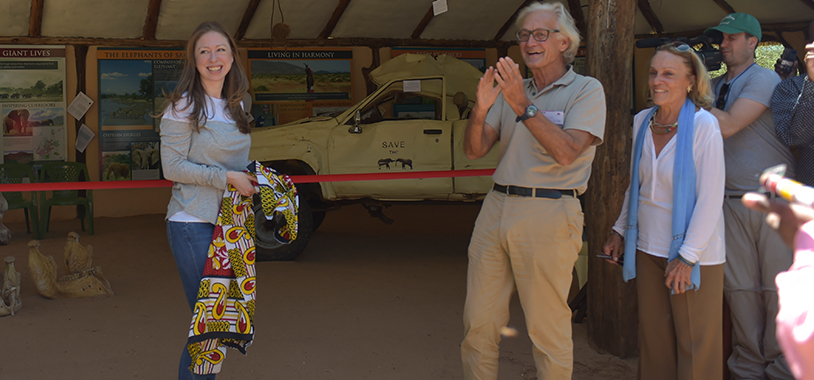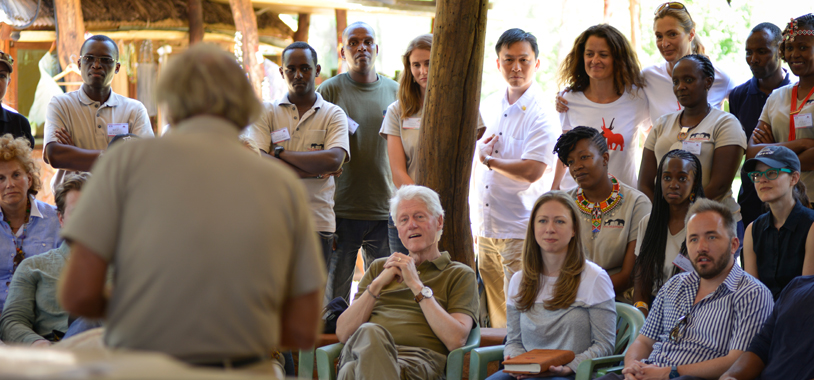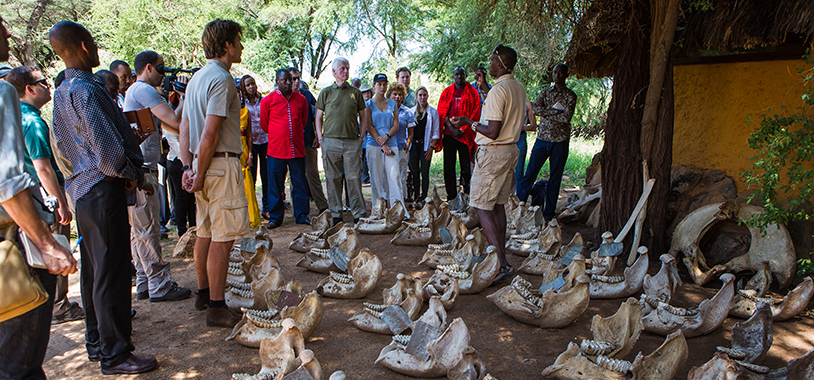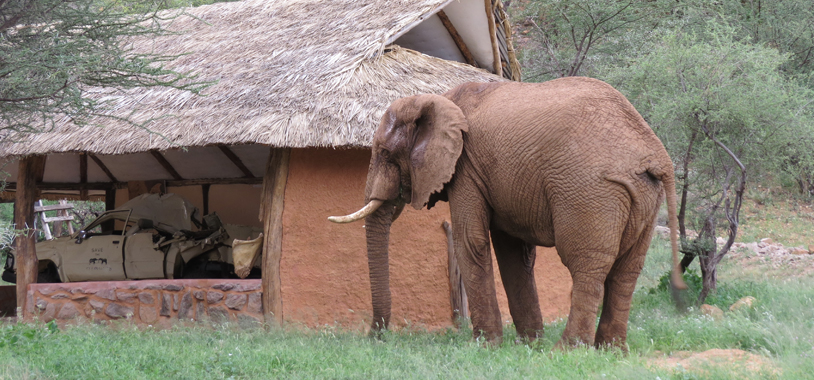On 3rd May 2015, against a backdrop of beautiful sounds from the Samburu morans, Chelsea Clinton officially opened our visitor’s Centre at the Save the Elephants research camp in Samburu, Kenya. It had taken the team months of designing and building to get it ready and it looked exquisite in every sense. From the white hessian roofs, the pillars made of fallen acacias to the colorful information boards on the walls, the Centre made for an excellent learning ground about the Save the Elephants scope of work. Hosting President Bill Clinton, Chelsea, the team from the Clinton Global Foundation and the delegation from the Samburu County government as our first guests added to the palpable excitement that already hung in the hot Samburu air.
At the heart of the Centre, stands the famous mangled research car that almost cost two of our field researchers their lives. Prof George Wittemyer and Daniel Lentipo experienced first hand the wrath of testosterone-fuelled bulls, and nearly paid with their lives for getting too close to a battle between two of them. Dr. Iain Douglas Hamilton kicked off the opening by narrating the fascinating story, laying bare the range of emotions that elephants face, from joy to jealousy and grief. Sitting in silence were his awestruck audience of dignitaries who in the end got a feel of what it really takes to work in the wilds of Samburu.
A team of experts including Dr. Douglas Hamilton, Frank Pope, David Daballen and Resson Kantai Duff then gave the guests a tour around the research centre. They would, among other things, be shown to our own ‘elephant mausoleum’ where skulls and jaws of individual elephants we knew and had tracked for years lay; having died from natural causes or sadly, poaching.
Take a moment and imagine a giant bull, one who towers over tourist vans and casts shadows on the rest of the herds. A male so dominating, one stamp of his foot could make the other males retreat; a musth bull who has first pick of every female when in estrous to ensure his set of genes moved along in generations to come. A male with beautifully long curved tusks…Pretty Boom Boom was a force to reckon with. Today, Pretty Boom Boom’s massive skull lies at the Save the Elephants visitor’s Centre, a victim of the rampant poaching in late 2011. His presence in the field is greatly missed but having his remains here offers the guests a chance to know about individual elephants and the work that has been put into tracking and monitoring the movements of the families and remaining big tuskers.
Our research Centre is set up in an open, unfenced area within the Samburu National Game Reserve. The most frequent visitors are wild animals; especially the elephants who feel quite at home here. Yeager and his friends Sarara, Malasso and Machu Picchu are often seen strutting their huge selves around camp feeding on the juicy acacia pods. What a blessing it was to get a nosy inspection from Sarara, as work wound to a close in November 2014!
As a special treat, the whole entourage then left for a game drive where they had first hand experiences meeting the elephant families of Samburu. Our researchers picked their interests with tales of lineages and history as well as poaching tragedies that left some families without matriarchs. The Swahilis is one of the orphaned families that has had to cope with figuring out life in the absence of their mothers, who of course had tonnes knowledge and survival skills passed from generation to generation.
At the core of STE’s mandate is international awareness and community outreach. The Centre, funded by the Krupp Foundation will host schoolchildren, local and international guests and policy makers to create a better understanding of our work in Samburu, Tsavo and other areas of operation.
We would like to thank the Krupp Foundation for the generous contribution towards the building and equipping of our visitor’s Centre.
Karibuni Samburu!






